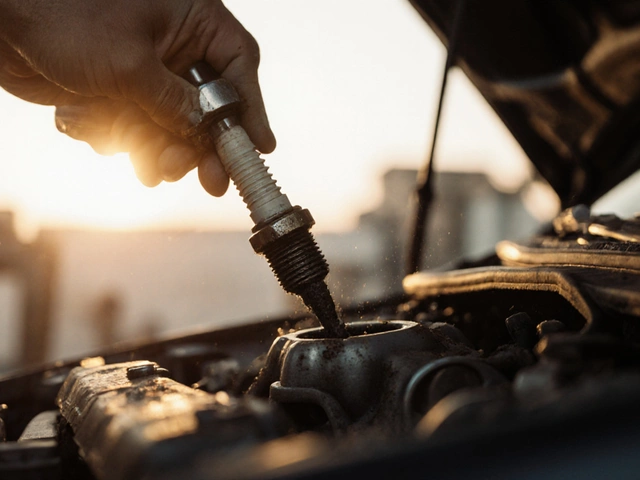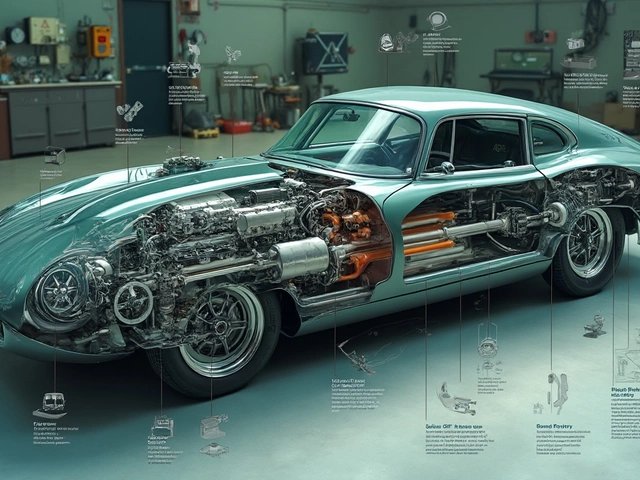Radiator DIY: Keep Your Engine Cool Without a Garage Visit
Ever wonder why your temperature gauge spikes after a short drive? Most drivers blame it on a mysterious "engine problem," but the real culprit is often the radiator. A clean, leak‑free radiator can save you from costly repairs, and you don’t need a mechanic to keep it healthy.
How to Spot Radiator Issues Before They Blow Up
Start with a visual check. Look for coolant leaks around the radiator tanks, hoses, and the water pump. A puddle of green, orange, or pink fluid under your car is a clear sign. Next, feel the radiator surface after the engine has cooled – any cold spots indicate a blockage or a broken tube.
Listen for unusual sounds. Hissing or bubbling noises while the engine runs often mean air trapped in the system, which reduces cooling efficiency. Finally, monitor the temperature gauge. If it climbs above the normal range within a few minutes, you probably have a clogged core or a failing thermostat.
DIY Radiator Flush: What You Need and How to Do It
Flushing the radiator removes rust, scale, and old coolant that can choke the heat exchange process. Gather these tools: a drain pan, a garden hose, a funnel, protective gloves, and the correct type of coolant for your car (check the owner’s manual).
1. Let the engine cool completely, then open the radiator cap. Place the drain pan under the overflow valve and open the drain valve to let old coolant pour out. 2. Close the valve and fill the system with distilled water using the funnel. Run the engine for a few minutes with the heater on full blast – this pushes water through the heater core and flushes out remaining debris. 3. Drain the water, repeat the flush until the runoff is clear, then close the drain valve.
Now it’s time to add fresh coolant. Mix the coolant and distilled water in the ratio the manufacturer recommends (often 50:50). Fill the radiator, top off the overflow tank, and run the engine until it reaches operating temperature. Watch for bubbles; if you see any, bleed the system by opening the bleed screw or squeezing the radiator neck until air escapes.
For a quick reference, our post "How Many Miles Do Car Radiators Last?" breaks down lifespan factors and tells you when a flush alone won’t cut it.
When to Replace the Radiator Yourself
Even the best DIY flush can’t fix a cracked core, broken fins, or corroded tanks. If you notice persistent overheating after a flush, or see physical damage during your visual inspection, replacement is the next step.
Here’s a streamlined replacement process:
- Disconnect the negative battery terminal to avoid electrical shorts.
- Drain all coolant from the system.
- Remove the upper and lower radiator hoses, noting their positions.
- Unbolt the radiator mounting brackets and carefully lift the unit out.
- Transfer the coolant reservoir and any attached sensors to the new radiator.
- Mount the new radiator, reattach the hoses, and tighten the brackets.
- Fill with fresh coolant, bleed air, and check for leaks.
The job usually takes 1‑2 hours for a typical front‑engine car. If you’re working on a rear‑engine or a high‑performance model, the steps may vary, and you might need a torque wrench for specific bolt specs.
Tips to Extend Radiator Life
After you’ve serviced or replaced the radiator, keep it in shape with a few habits:
- Check coolant level monthly, especially before long trips.
- Replace coolant every 2‑3 years or as the manual advises.
- Avoid driving through deep water that can force water into the radiator and cause corrosion.
- Inspect hoses for cracks or swelling every six months.
By staying on top of these simple checks, you’ll catch problems early and avoid a sudden overheating incident.
Ready to give your radiator some love? Grab the tools, follow the steps, and you’ll keep your engine running cool without a costly garage bill.
 13 March 2025
13 March 2025
Is Replacing a Radiator a Tough Task?
Replacing a radiator might seem daunting, but understanding the process can make it manageable. This article explores the ins and outs of radiator replacement, including tools needed and common pitfalls. While it requires some automotive know-how, with guidance, it’s doable for DIY enthusiasts. Discover useful tips and interesting facts about radiators to make the job less intimidating.






0